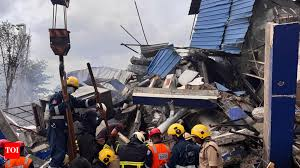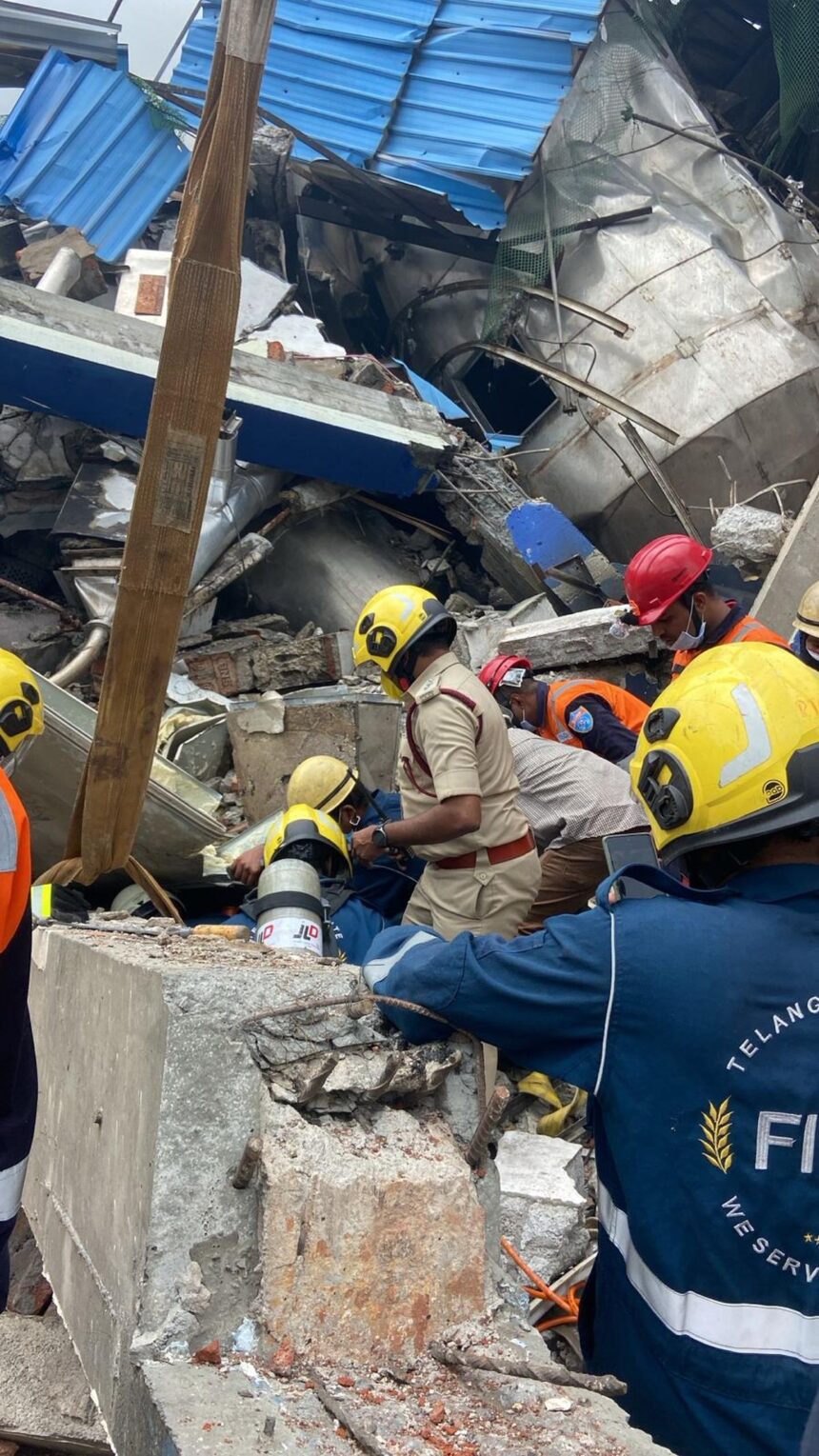Over 12 Workers Injured in Reactor Blast at Pharma Unit in Pashamylaram, Telangana
The Explosion that Shook Pashamylaram
In the early hours of a seemingly routine day at a pharmaceutical manufacturing unit in Pashamylaram Industrial Area in Telangana, a devastating explosion shattered the calm. A reactor at the unit reportedly malfunctioned and exploded, injuring over a dozen workers and triggering a chaotic emergency response. Sirens blared, plumes of smoke rose, and residents living nearby were jolted awake by the tremors and sound.
Initial reports indicate that the explosion occurred during an early production cycle, when the reactor—a high-pressure vessel used in chemical synthesis—suffered a catastrophic failure. Eyewitnesses described hearing a loud bang, followed by flames and black smoke emerging from the structure. Emergency services rushed to the scene, with fire brigades, ambulances, and police units cordoning off the area to prevent further risk.
Among the injured, several were in critical condition and were immediately shifted to private hospitals in Hyderabad for advanced treatment. Most of the victims sustained burn injuries, and a few also had fractures due to the force of the blast. The total number of workers present at the time remains unclear, but officials estimate that at least 20 people were on-site during the early shift.
The pharma unit involved belongs to a medium-sized contract manufacturing firm engaged in producing Active Pharmaceutical Ingredients (APIs) for export. The site, part of a cluster of pharma facilities in Pashamylaram—located on the outskirts of Hyderabad—had previously reported minor safety violations in routine inspections, though no serious lapses had been publicly recorded before this event.
Local officials from the Directorate of Factories and Boilers, as well as Telangana State Pollution Control Board (TSPCB), have launched independent investigations to determine the cause of the blast. Preliminary theories suggest that either a pressure build-up or a cooling system failure could have triggered the explosion, though a detailed technical assessment is awaited.
Residents and local workers’ unions have expressed outrage, citing a history of poor oversight in the region’s industrial zone. “This is not the first time something like this has happened in Pashamylaram,” said Ramesh Yadav, a local labor rights activist. “We’ve repeatedly demanded stricter safety enforcement, but our concerns are often brushed aside.”
As the sun rose on the devastated site, families of the injured workers gathered anxiously outside hospitals and factory gates. The mood was tense, grief-stricken, and filled with questions: How could this happen? Was it preventable? And will accountability follow?

Safety Gaps and Regulatory Oversight in India’s Pharma Industry
India’s pharmaceutical industry, often hailed as the “pharmacy of the world,” accounts for a significant portion of global medicine production. But behind this gleaming reputation lies a troubling history of safety violations, regulatory laxity, and structural deficiencies in enforcement mechanisms—particularly in the domain of industrial health and chemical safety.
The explosion at the Pashamylaram unit has exposed the very cracks that experts have been warning about for years. Pashamylaram, like many other pharma clusters across India, houses dozens of chemical manufacturing units that produce highly reactive compounds in often unsafe conditions. Despite handling flammable solvents and operating high-pressure reactors, many of these facilities are understaffed, undermonitored, and lack robust emergency preparedness protocols.
The Factories Act, 1948, and its subsequent amendments form the backbone of India’s industrial safety regulations. The Act mandates periodic inspections, safety training, equipment checks, and emergency drills. However, enforcement is inconsistent. States like Telangana, where the pharma sector is a major economic driver, often face a conflict of interest—between encouraging industry growth and ensuring worker safety.
Industrial safety audits are either underfunded or plagued by outdated inspection techniques. According to a 2023 audit by the Comptroller and Auditor General (CAG), several factories in Telangana had not been inspected for years, and in some cases, inspection reports were filed without any physical visit to the site. Inspectors are often overburdened, with one official reportedly handling oversight for as many as 500 units.
Adding to this, there is minimal coordination between various departments—fire safety, pollution control, labor welfare, and industrial development often operate in silos. When incidents occur, as in the Pashamylaram blast, finger-pointing becomes the norm rather than a coordinated response.
There’s also a wider systemic issue: lack of worker awareness. Many of the employees in smaller pharma units are contract laborers with little to no training in handling hazardous chemicals. Protective gear is often inadequate or unavailable, and Standard Operating Procedures (SOPs) exist only on paper. Workers are rarely made part of safety drills or emergency simulation exercises.
A former safety officer at a leading Hyderabad-based pharmaceutical company, speaking on condition of anonymity, stated: “The pressure to meet production deadlines overrides safety protocols. If a plant is behind on orders, corners are cut. We’ve seen it happen repeatedly.”
Moreover, whistleblowers are discouraged. Fear of job loss and lack of grievance redressal mechanisms prevent many from reporting dangerous practices. Labor unions, where present, face intimidation or are co-opted.
Pashamylaram’s incident may just be the tip of the iceberg. According to NCRB data, Telangana alone recorded over 400 industrial accidents in 2023, with a significant number involving chemical industries. And yet, accountability is rare. Few factory owners are prosecuted under the Factories Act, and monetary penalties are often negligible, viewed as a cost of doing business.
As the investigation into the reactor blast unfolds, attention is now turning to the lapses in inspection history, ignored red flags, and whether the plant had updated its licenses and safety certificates. The question remains: how many more blasts, injuries, and lives must it take before regulatory overhaul becomes more than a post-crisis promise?
Also Read : Massive NASA Headquarters Budget Protest Set for Monday as Thousands Demand $25 Billion Funding Boost








